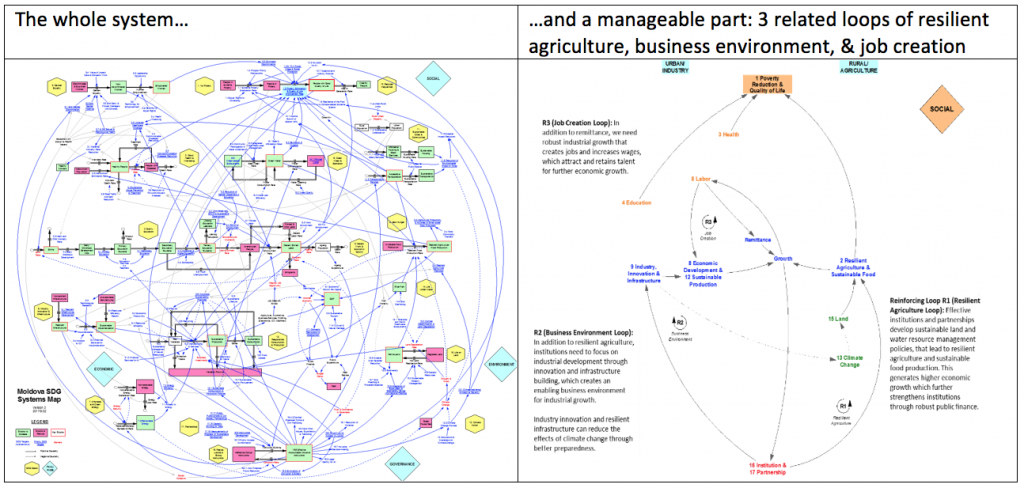As Einstein says, “Everything should be made as simple as possible, but not simpler.”

Grey wolves in Lamar Valley. Photo: Yellowstone National Park
Can wolves change a river flow? Hard to believe, but yes.
In 1995, grey wolf packs were reintroduced in Yellowstone National Park, with remarkable consequences for the entire ecosystem. Elks, afraid of being eating by the wolves, began avoiding open regions such as open meadows and gorges. New plant growth increased, provoking subtle changes in the park’s waterways. An increased number of trees attracted various bird species. The beaver, previously extinct in the region, returned and their dams attracted otters, muskrats and reptiles. The rivers meandered less, reducing erosion and forming more pools. So ultimately, the wolves helped stabilize river banks and fix the rivers in their courses.
This story resonates strongly with my experience with the Sustainable Development Goals, especially as we at UNDP help countries to embrace and domesticate Agenda 2030. We are living in ecosystems, not hierarchies. Our relationships in the world are circular, not linear.
Linkages are more important than the elements of the system themselves.
For example, in Bosnia and Herzegovina some 40 percent of companies have vacancies hard to fill due to applicants’ lack of skills. But at the same time, nearly 25 percent of its youth aren’t working or in school or training. People complain that not knowing the right people is a major obstacle in getting good job (56%), not just lack of jobs (35%) or inadequate or irrelevant education (14%). These relationships are clearly non-linear and cannot be solved by traditional approaches, assuming that a good education will find you a job.
In this instance, UNDP looked at Bosnia and Herzegovina’s local employment “ecosystem” and saw that one of the big issues is a disconnection between social assistance and job placement systems. UNDP supported establishing links between the two, so people who are receiving social assistance also have chances at job offers and are helped transition to jobs. And UNDP brokered partnerships with private companies to provide internships and apprenticeships to provide practical skills demanded by the labor market.
This is just one example of the broader SDG issue. We need tools to make this type of complexity manageable, and we are actively designing and testing them:
1) Tools to zoom out and zoom in
A System Dynamic Map maps out all problems and interactions between them. For instance, youth employment is linked not only with enrollment to universities, but also with skills for employment, economic development policies, and accessibility of transport. The whole system map is a spaghetti of interactions. You can easily spot “economic”, “social” or “environmental” corners and dig in for more details, or you can zoom out and see the overall picture. Such maps are also a great tool for building partnerships. A similar map in Tajikistan revealed one village self-support group of migrant wives left behind organized a community kindergarten to free up time for business.
2) Better tools for Sense Making and Foresight
In a complex system, you cannot really categorize things into neat boxes and use “best practices”. Regular indicators only tell part of the story. You need triangulation, i.e. looking at the same issue from different perspectives, combining qualitative and quantitative data. Micronarratives, which combines narrative with quantitative description, is one example of sense-making tools we are using. As testified by stories told by the Roma, the main reason to embark on an uncertain – and often unregulated – migration to the EU is the search for mere survival in terms of income and physical and emotional security. Those who returned from the EU feel rejected and alienated with limited support for reintegration. Mere data from our recent study could not tell us these nuances.
Equipped with these tools, we can better handle the enormous complexity of SDGs. We could go from unmanageable complexity—everything is related to everything—to well-informed Theories of Change.
Originally posted at UNDP Europe and Central Asia blog.

